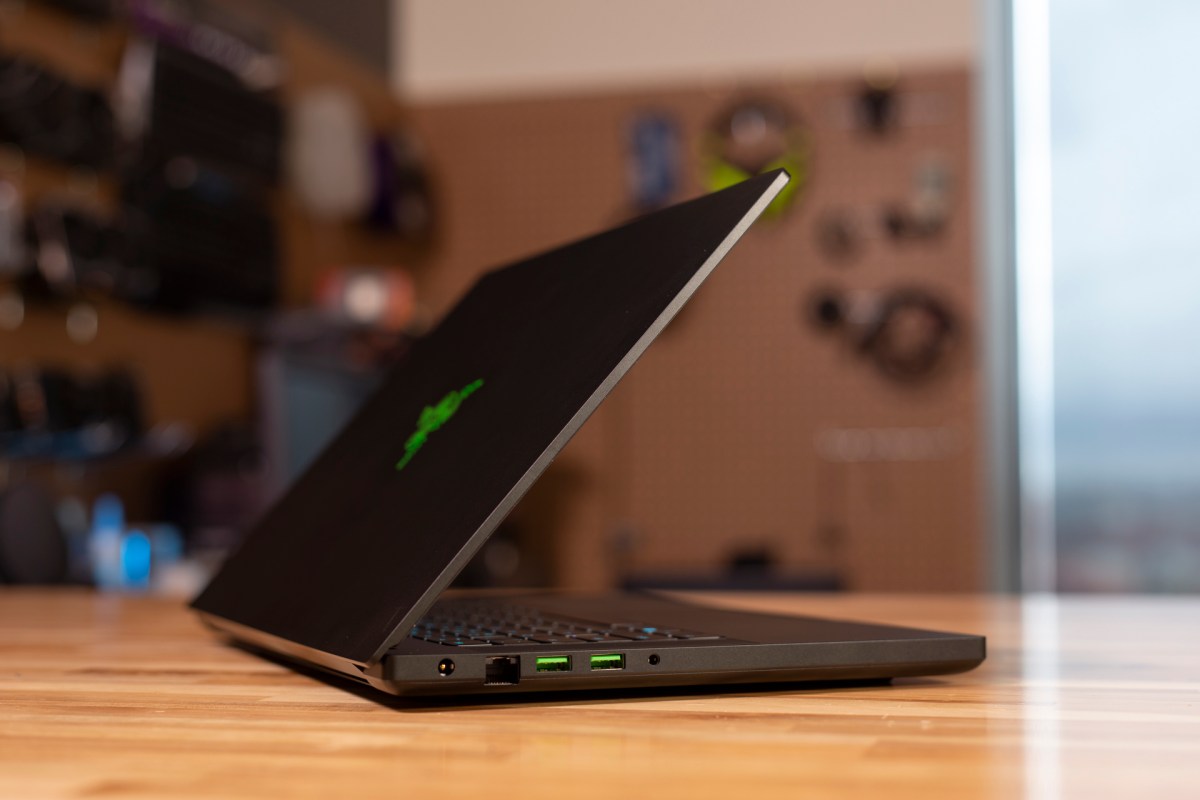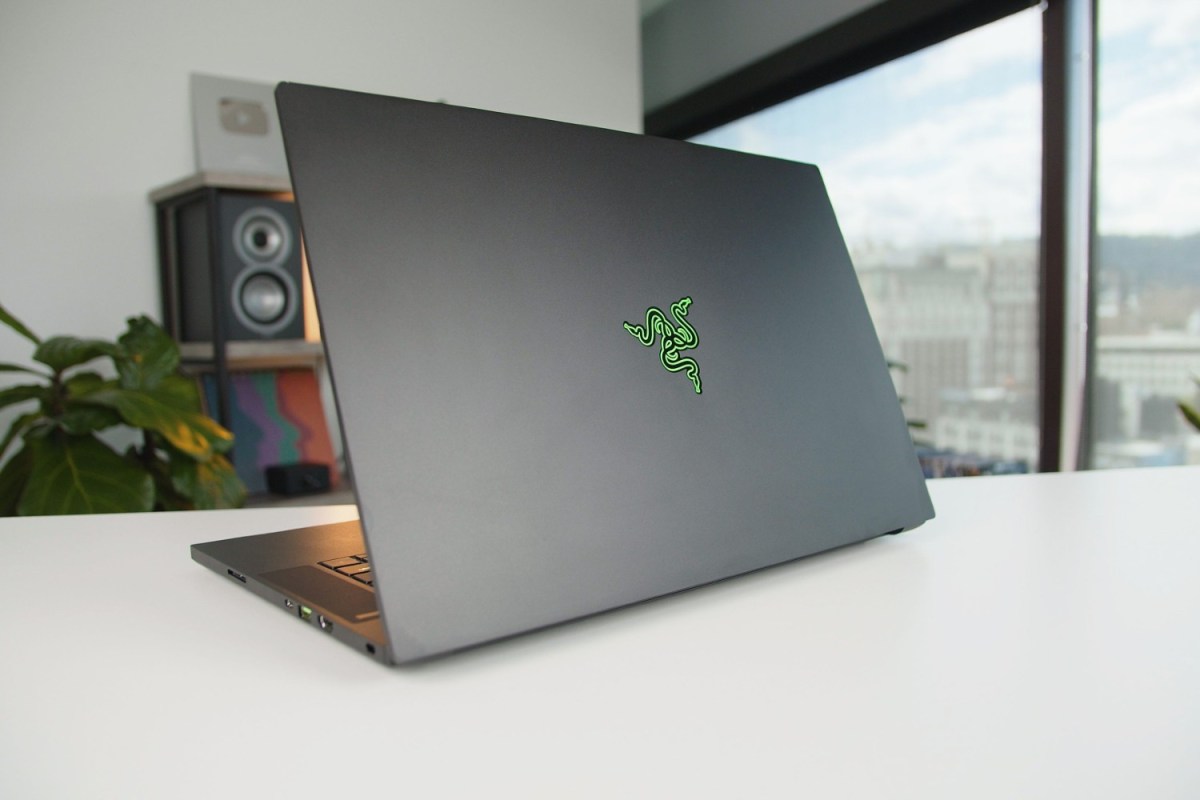The Razer Blade 15 is the best gaming laptop you can buy. It’s an insanely sleek laptop, especially considering how much gaming performance it can spit out. Razer does offer a number of versions of its flagship gaming laptop, however. That can make it tough to configure if you want to save some money.
Razer does keep its range of options tight. That can help you avoid wasting money on upgrades that won’t help the gaming experience, if you know which options to select.
The Base Edition

The Razer Blade 15 actually isn’t just one laptop, but comes in three different models that are slightly different in design: The Base, Advanced, and Studio Edition.
The least expensive model is the “Base Edition,” which starts at $1,600. If you love the aesthetic of the Razer Blade, but not the price, a Base Edition is worth considering. It comes with a 10th-generation Intel Core i7-10750H processor, a 256GB SSD, and an Nvidia GTX 1660 Ti graphics card.
You can buy three other configurations of the Base Edition. For $1,800, you get double the storage and move up to an RTX 2060 GPU. That’s an upgrade in performance and storage that is well worth the money. You’ll likely be disappointed by the performance of anything lower than an RTX 2060. An extra $200 will bump you up to the RTX 2070 Max-Q, the most powerful version of the Base Edition.
All versions of the Base Edition come with 16GB of dual-channel RAM and a 144Hz refresh rate screen. The one exception is the 4K OLED model, which costs $2,300 and is capped at 60Hz. As is true across the board, the 4K display isn’t ideal for gaming due to the limited refresh rate. But the 4K screen is, unfortunately, the only way to open up the “Mercury White” color option.
Other than performance, the Base Edition is a bit thicker and heavier than the Advanced Edition. It’s 10% chunkier than the other models, though it’s still small compared to other gaming laptops.
The Advanced Edition

The Advanced Edition of the Razer Blade is its most powerful gaming laptop, which is why it gets most of the attention. Starting at $2,600, it’s hardly cheap. What you get, though, is exceptional gaming performance, regardless of the configuration you choose. The $2,600 model comes with an Intel Core i7-10875H, an Nvidia RTX 2070 Super Max-Q, and a 512GB SSD.
Like all versions of the Advanced Edition, it comes with 16GB of dual-channel memory. Most importantly, it ships with a 1080p screen that has an astounding 300Hz refresh rate. This is the ideal panel for gaming, ensuring your frame rates are never capped by the refresh rate of the screen. It also has a faster 3ms (millisecond) response time compared to the Base Edition’s 5ms screen. The Base Edition’s screen is still solid, but if you’re interested in pushing higher frame rates, the Advanced Edition is noticeably smoother.
For $400 more, you can bump the graphics up to an RTX 2080 Super Max-Q, and the storage capacity to a 1TB SSD. This is the configuration I reviewed, which delivered a fast and fluid gaming experience in every game I played. Even the most demanding games can hit 60 FPS (frames per second), while most first-person shooters will be in the mid-100s with settings at max.
If you really want to push the maximum capability of the refresh rate, games like Counter-Strike: GO or Rocket League will easily get you into the mid-200s. That’s unbelievably fluid gaming.

These RTX Super cards are the best laptops graphics cards available from Nvidia. The Max-Q designation means it has been restricted thermally to fit in the thin chassis. That has become commonplace in high-end gaming laptops, though chunkier options like the Alienware Area-51m offer non-Max-Q graphics options.
When deciding between the Base Edition and Advanced Edition, you’ll be left wondering how the GPUs compare. The RTX 2070 Super Max-Q in the Advanced Edition is only marginally faster than the standard RTX 2080 Max-Q in the Base Edition.
There’s more difference between the two than just performance. As stated earlier, the Advanced Edition of the Razer Blade introduces a chassis that is 10% lighter and thinner than the Base Edition, though made of the same materials. It also comes with a larger 80 watt-hour battery compared to the Base Edition’s 65-watt hour battery.
Other small upgrades include an IR camera for fast Windows Hello facial authentication and per-key RGB backlighting — the Base Edition only includes single-zone backlighting.
Lastly, the Advanced Edition features a redesigned thermal system, which uses vapor chambers rather than traditional heat pipes.
The Studio Edition

The Studio Edition is also an option, and it uses professional-grade Nvidia Quadro 5000 graphics. This isn’t a gaming laptop at all, really. Instead, it’s made for video editors, designers, photographers, and other content creators. That’s true for all of Razer’s 4K laptops, but this one comes specially tuned with Nvidia Quadro drivers that optimize the performance more in professionals applications. It also ships with Windows 10 Pro rather than Windows 10 Home.
There’s only one version of the Studio Edition, which costs $4,300 and comes with an eight-core Intel Core i7-10875H, 32GB of RAM, an Nvidia Quadro 5000 graphics card, and a 1TB of SSD storage. This model, of course, also uses a 4K OLED screen.
The older model, offered at $4,000, only has a six-core processor and loses much of its performance potential.
The Studio Edition uses the same chassis as the Advanced Edition, even down to the per-key RGB backlighting, better thermals, and smaller size.
Warranty options
Deciding on warranty is the final step before confirming your purchase. Razer offers a limited one-year warranty for basic defects, but for any more than that, you’ll need to opt into RazerCare. Neither are cheap, but they extend the customer support life of the product for up to three years.
Your two options are the $250 “Essential Protection Plan” and the $370 “Elite Protection Plan.” They both last three years, but the Elite plan is the only one that includes protection against accidental damage, such as drops or spills. I’d prefer Razer to offer accidental damage service separately from the more basic customer support plans, but Razer bundles them together.


